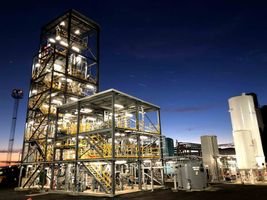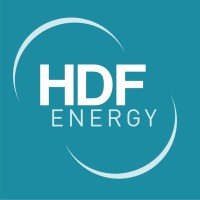Japan-Australia project starts brown hydrogen production

Japan-Australia Hydrogen Energy Supply Chain (HESC) project, a pilot project whose goal is to produce clean hydrogen in Victoria‘s Latrobe Valley and ships it to Japan, has started operation.
The hydrogen production started in a newly built facility at AGL Loy Yang Complex, Latrobe Valley, Australia, on 23rd January 2021. Electric Power Development Co., Ltd. (Japan electric utility operating under the brand name J-Power, formerly known as Denpatsu) manages the facility.
“Hydrogen has not been shipped to Japan yet. The next stage of our pilot will see hydrogen gas will be trucked to Hastings, liquefied and stored. Shipment of liquid hydrogen between Japan and Port of Hastings will occur later this year,” a representative of HESC told H2 Bulletin.
The pilot is still underway, so exact quantities of H2 production can’t be calculated yet. The gasification and gas reining facility has three tonnes of H2 gas output capacity, H2 Bulletin noted.
One purpose of the HESC Pilot is to conduct an analysis of the economic feasibility of producing hydrogen gas from coal in the Latrobe Valley, liquefying it and exporting it to Japan. According to 2019 data from the IEA, hydrogen made from fossil fuel with CCS costs significantly less than hydrogen from renewables – US$ 1.20 –2.60/kg, compared to US$ 3.20-7.70. HESC Project Partners are confident they can deliver cost-competitive hydrogen, HESC added.
“We HySTRA are planning to ship Hydrogen to Japan by the end of this year. The cost and amount of H2 production have not decided yet,” J-Power confirmed to H2 Bulletin.
The project is supported by the New Energy and Industrial Technology Development Organisation and the Commonwealth and Victorian governments. It is run by CO2-free Hydrogen Energy Supply-chain Technology Research Association (HySTRA) and the Australian consortium consisting of Iwatani, Marubeni, Kawasaki Heavy Industries, J-Power, Sumitomo and AGL Energy Ltd.

At the Australian facility, the coal is gasified and converted into syngas containing hydrogen. Once the hydrogen is cleaned, it would then be loaded onto a trailer truck transported to the Port of Hastings, located 150 km from the plant. The hydrogen will then be liquefied and shipped through a liquefied hydrogen carrier ship at the port of Hastings in Victoria, Australia, to Kobe Airport Island, Japan.
The Hydrogen Energy Supply Chain (HESC) project is using low-grade brown coal. Due to the high moisture, the local coal is not suitable for transportation. The project aims to use coal for clean hydrogen production, which would then be shipped to Japan. The construction work on the demonstration plant started in November 2019. If the pilot is successful, depending on demand and regulatory approval, the project will move to commercial-scale operations in the 2030s.
